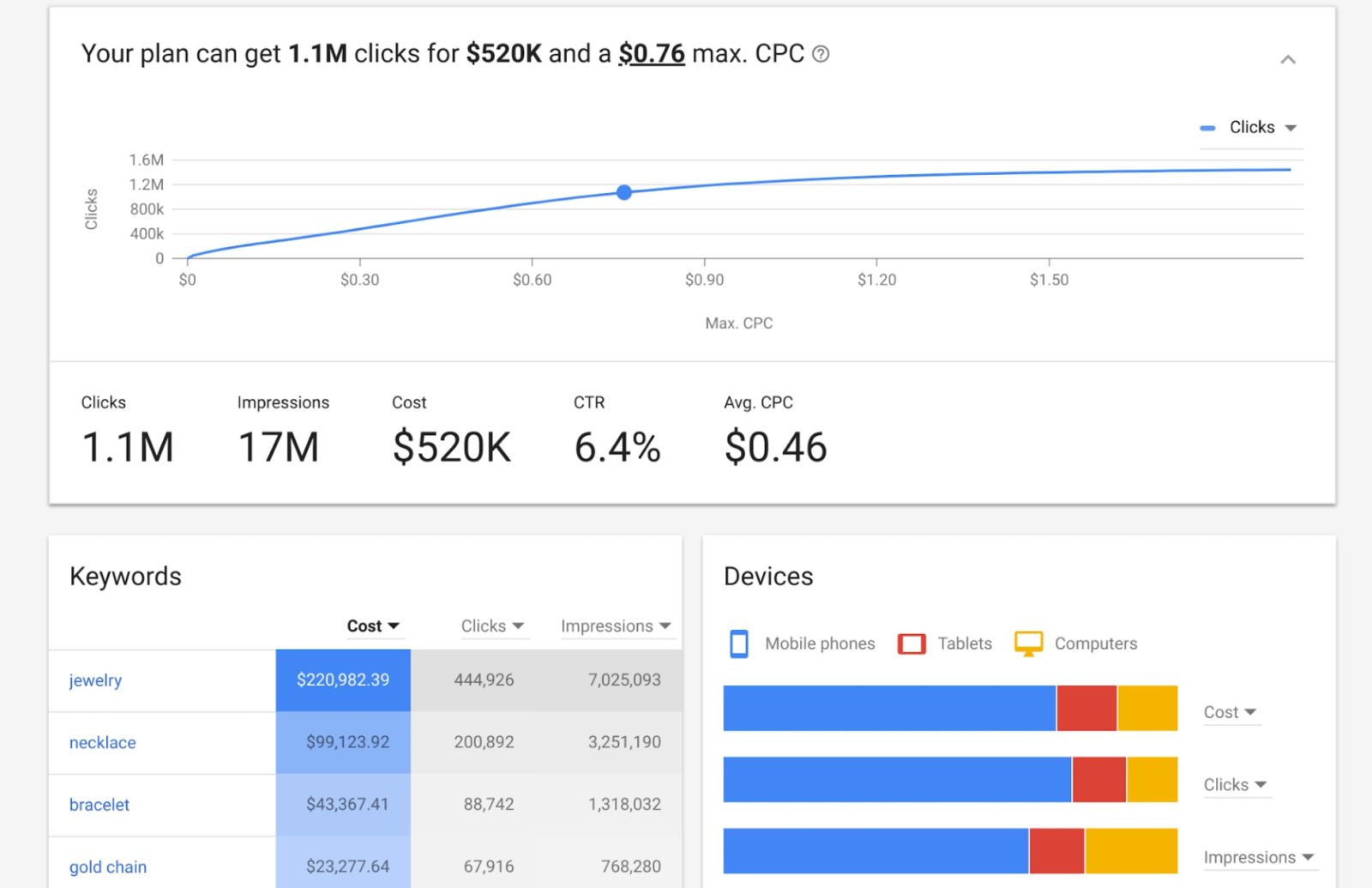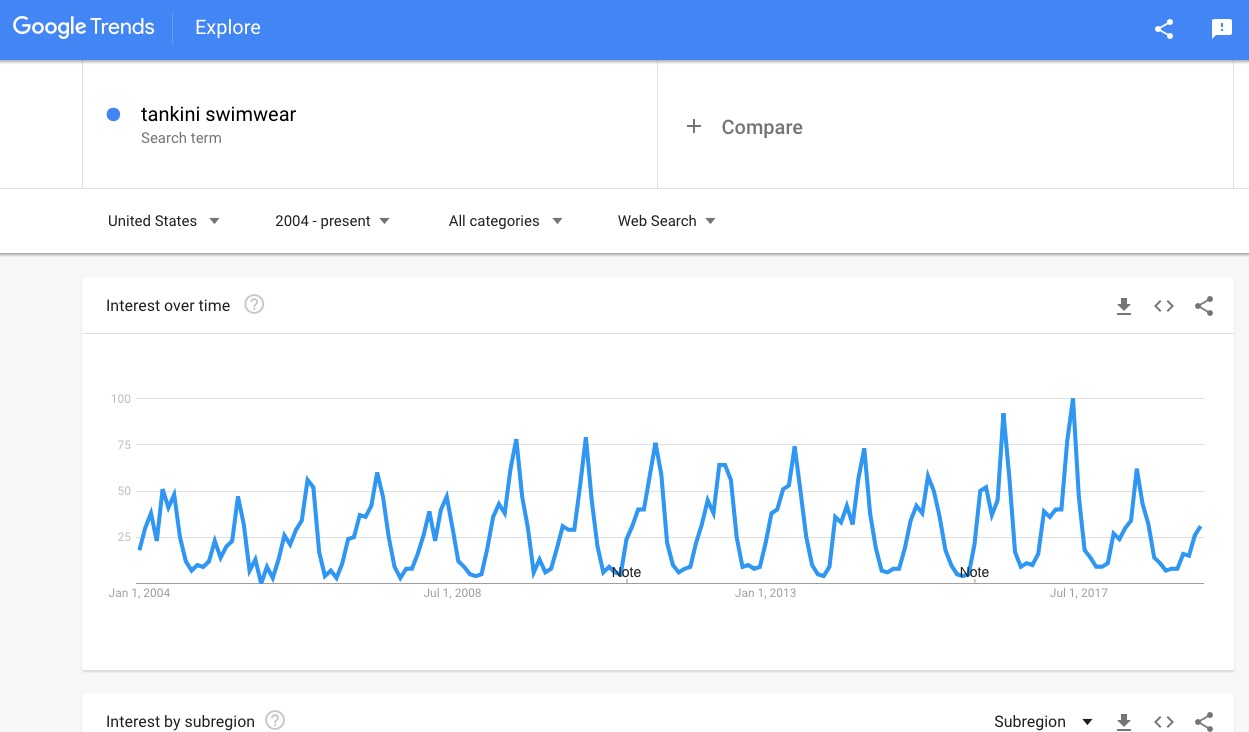
Most business leaders today know the importance of investing in search engine marketing (SEM) to reach target audiences and desired goals. But what they might not realize is how much PPC budget they need to succeed, or the value of their ad spend. Whether you’re an independent marketing agency pitching to clients or an in-house SEM manager, you need accurate PPC forecasting to succeed in your role.
It’s simply impossible to build a solid PPC strategy without buy-in from your leadership team. And you won’t get a lot of investment if you’re asking them to allocate funds based on guesswork about future revenue. PPC forecasting gives you hard numbers to prove the value of ad spend to those controlling the finances.
Google Ads forecasts can also help SEM managers understand the impact of different campaign adjustments on future performance. Creating accurate forecasts empowers marketers to evaluate new optimization opportunities before testing them out in the real world. This will ultimately reduce wasted ad spend and maximize the efficiency of SEM efforts overall.
In this article, we present everything you need to know to forecast CPC and project other important PPC performance indicators.
The amount, and quality, of data you have is the most important aspect when it comes to creating an accurate PPC forecast. Using just a few key data points to extrapolate future performance greatly increases the chances that your forecast will be inaccurate. If you’ve already run PPC campaigns in the past, you’ll have a wealth of valuable data that can help you. Important data to include in your forecasting reports includes:
Much of this data can be downloaded from your Google Ads account. Just go to the Account > Export menu, where you can select whether to export your whole account, selected campaigns, or ad groups. There’s a lot of information here, so narrow your selection down to the data points and time ranges most relevant to you.
If you’re creating a brand new Google ads forecast and don’t have any historical data to work with, then you’ll rely on impressions and suggested bid data to make your calculations. Determining your cost per click (CPC) is an important PPC forecasting task, especially when working with new clients or launching campaigns for new products. Getting an accurate estimation of your CPC will inform the necessary budget and monthly ad spend needed to reach business goals.
Forecasting CPC is easy using new features Google added to Keyword Planner last year. Go to Keyword Planner and rather than clicking “Find new keywords,” chose “Get search volume and forecasts.”

You’ll see an option to add in, or upload, new keyword terms you want to target. Simply import them, click “Get Started,” then Keyword Planner will give you a detailed forecast and your average CPC:

The report shows you details of how certain keywords impact performance. Once you create a campaign, you can also adjust max CPC and see how that affects future outcomes. This is a powerful tool to gain insights into how your ads could perform given a certain budget.
One major issue with PPC forecasting is that calculations are based on static market performance. You can only expect your bidding approach to play out exactly as forecasted if your competitors make zero changes to their own strategies. PPC optimization involves auctions. There’s no accounting for how strongly competitors might bid on the same keywords as you. This can have a huge impact on performance.
While there’s no way to predict how your competition will act, it is worthwhile to consider their past behavior as part of your forecasting efforts. Comparing competitor campaigns to yours can help you make necessary adjustments to optimize your campaigns. A helpful tool for this is Google’s Auction Insights. This report details how your previous campaigns performed compared to your competitors. Auction Insight metrics include:
Impression Share: The percentage of impressions you receive versus the total amount of impressions your ad was qualified for.
Average Position: The average position of your PPC ad compared to others.
Overlap Rate: How often another advertiser’s ad received an impression in the same auction that your ad received an impression.
Position Above Rate: How often another advertiser’s ad in the same auction shows in a higher position than your own when both of your ads were shown at the same time.
Top of Page Rate: How often your ad (or a competitor’s ad) was shown at the top of the page in search results.
Outranking Share: How many times your ads outranked your competitor’s ad in the auction.
Google Auction Insights can give you a good idea of how aggressive your competitors are in the auctions and reveal patterns in their strategies. Run frequent reports and see how they change at different times of the day or days of the week. When you’re able to observe certain tendencies in your competitor’s ad schedule or bidding strategy, you can reflect this in your forecasts.
Seasonal trends can have a big impact on bidding, CPC, and ad performance overall. They’re also important to factor into PPC forecasting. For most businesses, seasonal factors can include holidays (like Black Friday shopping), or, they could be related to the weather, such as a towing business wanting to increase bids during the snow season.
There’s no reason to assume that seasonal changes will remain static year after year. Say, for example, you run an e-commerce business that sells bathing suits, and you saw interest quadrupled in “tankini swimwear” between April and June of 2018. Factoring this spike into your 2019 forecasts might lead to inaccurate predictions about future performance. That’s why it’s important to factor in long-term seasonality data for SEM forecasting.
Google Trends is the only tool you need to consider this. Just type in a relevant keyword you’re researching, then you can visualize both short and long term search volume (2004 - present):

This will show you if a seasonal trend is predictable enough to factor into your PPC forecasting calculations. If a seasonal spike looks abnormal compared to previous years, then you’ll need to use contextual information to decide if it’s a fluke or a new trend that’s here to stay.
Gathering important data inputs is the easy part of accurate PPC forecasting. The hard part is analyzing and developing your projection. There are a few different ways to approach SEM forecasting. Each has its own benefits.
Manual Reports
Undoubtedly the most difficult way to forecast CPC and spend is by creating manual reports. PPC forecasting is possible with nothing more than a data set, a spreadsheet, and a few calculations. At a minimum, you’ll need impressions and bid data to create your own reports. If you have no previous campaign data, you can rely on suggested bids and cost per click from Google Ads. If you have previous campaign data, you can also include historical click-through rates, conversion rates, and conversion value.
With your manual report, you should be able to project:
All these calculations will depend on what ad groups, placements, targeting, and budget spend you allow to drive conversions. If you’re presenting projections as a proposal to business leaders, you’ll want to adjust all these factors to determine the best possible combination to drive conversions given your allowance.
An important adjustment to make for your PPC forecasting is impression share. You can’t assume you’ll buy all possible impressions. So calculate impression share to avoid overestimating projected performance. You can use past impression share from Google’s Auction Insights as a guide.
The biggest benefit of manual reports is that they’re completely customizable. You can include whatever data inputs you want, create projections the way you want, and adjust projections based on qualitative insights you gain about your business, market, seasonality, etc. The challenge of creating manual reports is sophistication. If you’re not a statistics whizz, it’s difficult to create highly accurate projections using just a spreadsheet. You can enlist the help of data scientists to do this for you, or turn to other SEM forecasting solutions.
Third-Party Reporting Tools
If you don’t have the skills or resources to create your own reports, then you can use a third-party reporting tool. There are a variety of options out there that will automatically import past performance data from Google Ads as well as consider other relevant data to summarize performance. This is beneficial because you don’t have to continuously download and analyze historical data to forecast spend and CPC. It automatically does this for you.
Third-party reporting tools also come with a variety of SEM report templates designed by PPC professionals so you can create customized forecasting reports beyond what basic spreadsheet analysis can provide.
PPC forecasting will always be a challenge for SEM professionals. There’s no way to really predict future performance with complete accuracy, regardless of how much relevant data you use. That said, if you invest in creating a sophisticated Google Ads forecast, the benefits are many. The better you predict future performance, the more confidence clients will have in your strategies.
Understanding how strategy changes impact future performance also helps you create more effective campaigns overall. With that in mind, investing time in creating manual PPC forecasting reports is a minimum requirement. Taking advantage of advanced tools to automate insights and adjustments can do even more to maximize the value of forecasting for SEM success.